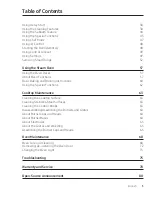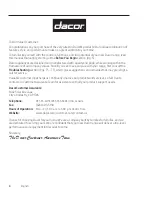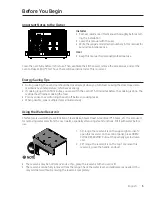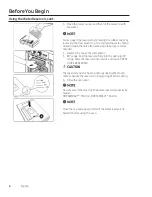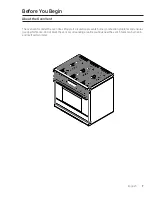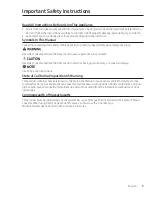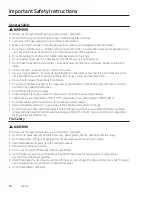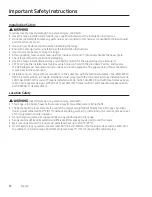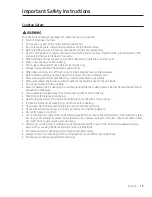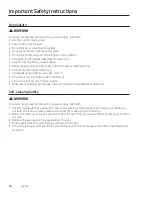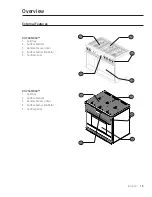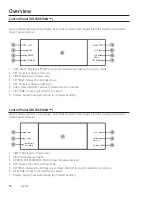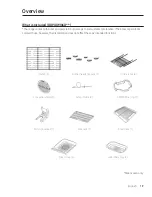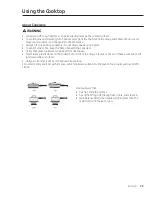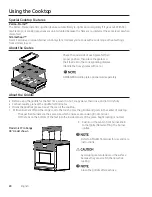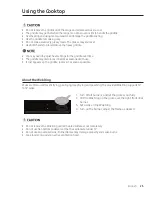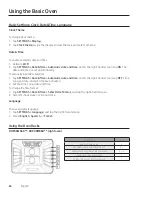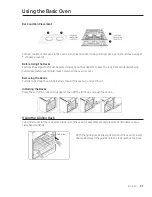
12
English
Installation Safety
To reduce risk of property damage, fire, personal injury, and death:
•
Have the range installed and grounded by a qualified installer per the Installation Instructions.
•
Do not service/modify/replace any parts unless as instructed in this manual. A qualified technician should
perform all other service.
•
Use only new, flexible connectors when installing the range.
• Ensure the anti-tip device is installed per the Installation Instructions.
• Use two or more people to move the range.
• After unpacking, remove all accessories from inside and around it. (Cautiously handle the heavy grate.
• Check for parts that loosened during shipping.
•
Have the range installed/adjusted by a qualified technician for the supplied gas type (natural or
•
LP). For LP gas, the installer must replace every burner orifice with the provided LP orifice, and reverse
the GPR adapter per manufacturer instructions and local regulations. The agency doing this work shall be
responsible for the conversion.
• Installation must comply with local codes or, in their absence, with the National Fuel Gas Code, ANSI Z223.1/
NFPA.54, latest edition. In Canada, installation must comply with the current Natural Gas Installation Code,
CAN/CGA-B149.1, or the current Propane Installation Code, CAN/ CGA-B149.2, and with local codes as appli-
cable. This range was design-certified by ETL per ANSI Z21.1 (latest edition), and Canadian Gas Association
per CAN/CGA-1.1 (latest edition).
Location Safety
To reduce risk of property damage, fire, personal injury, and death:
• This range is for indoor, household use only, away from weather, water, strong drafts.
•
The floor should be level and able to support the range’s weight (about 564lbs for a 48" range). Synthetic
flooring must withstand 180 °F (82 °C) without shrinking, warping, or discoloring. Over carpet, place a sheet
of ¼-in. plywood or similar insulator.
• Do not hang long curtains or paper blinds on any window next to the range.
•
Range vents must be unimpeded and sufficient airflow space provided all around the range.
• Wall coverings around the range must withstand heat up to 200 °F (93 °C).
• If overhead storage is needed, allow at least 30" (76.2 cm) between the cooking surface and the bottom of
the cabinets, or install a range hood that projects at least 5" (12.7 cm) beyond the cabinetry face.
Important Safety Instructions



